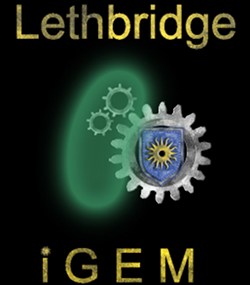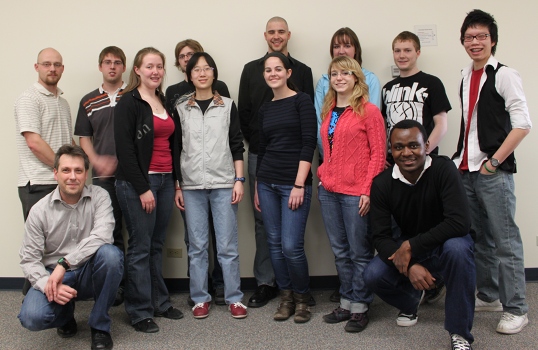Team:Lethbridge
From 2010.igem.org
JustinVigar (Talk | contribs) (→University of Lethbridge 2010 Team) |
JustinVigar (Talk | contribs) |
||
| Line 48: | Line 48: | ||
|} | |} | ||
| - | =Project Description= | + | =Project Description= |
The tailings ponds that result from the extraction of oil from the oil sands have used up vast amounts of fresh water and contain substantial quantities of useable organic matter. While most of the oil is extracted from the oil sands, some is left behind and added to the tailing pond waters. The left over hydrocarbon compounds, bitumen, can be extracted from the ponds and potentially used to create another source of fuel, thus cleaning the tailing ponds and creating a profit. <br> | The tailings ponds that result from the extraction of oil from the oil sands have used up vast amounts of fresh water and contain substantial quantities of useable organic matter. While most of the oil is extracted from the oil sands, some is left behind and added to the tailing pond waters. The left over hydrocarbon compounds, bitumen, can be extracted from the ponds and potentially used to create another source of fuel, thus cleaning the tailing ponds and creating a profit. <br> | ||
Revision as of 20:33, 16 July 2010
Contents |
Project Description
The tailings ponds that result from the extraction of oil from the oil sands have used up vast amounts of fresh water and contain substantial quantities of useable organic matter. While most of the oil is extracted from the oil sands, some is left behind and added to the tailing pond waters. The left over hydrocarbon compounds, bitumen, can be extracted from the ponds and potentially used to create another source of fuel, thus cleaning the tailing ponds and creating a profit.
We wish to develop and characterize a BioBrick, that can breakdown some of the more prominent toxic organic compounds found in the tailing ponds to a more useable form. Currently we are targeting catechol, a compound that has shown to be degraded by bacteria living in the tailings ponds1. Catechol is being converted into 2-hydroxymuconic semialdehyde, which we later hope to further convert into a useful hydrocarbon compound.
Additionally, we plan to target our catechol degrading enzyme into a microcompartment which the University of Lethbridge team has been working on since last year. By compartmentalizing the converted catechol, were trying to develop a way of easily removing the useful hydrocarbon product from the tailings ponds. As a proof of principle we will target the catechol degradation enzyme into the negatively charged microcompartment by the use of a poly-arginine tag. Furthermore, to avoid adding a new species into the oil sands environment we plan on using the DNA digestion part created by Berkley in 2007 to render our Escherichia coli cells unable to reproduce or able to horizontally transfer its genes.
For our bacteria to target areas of high catachol concentration we plan to use chemotaxis. Chemotaxis is a way in which bacteria migrate towards food, poisons, or in this case catechol. This will help decrease the time it will take to degrade catechol in the tailing ponds.
Finally, we will be continuing to explore the novel method of the mass production of uniform iron nanoparticles, which is more efficient and cost effective than current methods. To optimize the production of nanoparticles we are attaching signal peptide sequences to export the protein to different areas of the cell. By attaching these signal peptides and having the protein directed to certain areas of the cell we hope to find which area is most productive to produce nanoparticles.
References
Kato, T., Haruki, M., Imanaka, T., Morikawa, M., and Kanaya, S. (2001). Isolation and characterization of psychrotrophic bacteria from oil-reservoir and oil sands. Applied Microbial Biotechnology. 55, 794-800.
University of Lethbridge 2010 Team
Excited for the upcoming 2010 iGEM season, the University of Lethbridge 2010 Team consists of ten undergraduate students, five graduate student advisors and one faculty member. We have high hopes for the upcoming season having received financial or gift in kind support from the groups listed bellow. If you are interested in helping our team reach our goals, contact us at uleth.igem@gmail.com.
Sponsors
Platinum
Alberta Innovates Technology Futures
Oil Sands Initiative
https://2010.igem.org/Oil_Sands
Gold
Silver
Autodesk
MathWorks
Geneious
Bronze
Integrated DNA Technologies
GeneArt & Mr. Gene
 "
"


 ]
]
 ]
]
 ]
]
 ]
]
 ]
]
 ]
]
 ]
]
 ]
]














